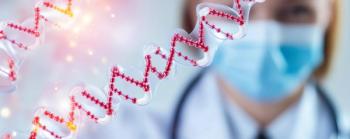
Study Examines Model-Based Performance Analysis of Integrated Chromatography-Ultrafilter Separation for Monoclonal Antibodies
Scientists from the University of Edinburgh evaluated different polishing chromatography elution strategies to optimize output.
A recent study published in Biochemical Engineering Journal explored 44 polishing chromatography elution strategies by yield and titer to reduce variability and maximize recovery yield and monoclonal antibody (mAb) titers (1). The scientists, Wil Jones and Dimitrios Gerogiorgis, who are a student and assistant professor, at the University of Edinburgh in Scotland, combined a pH-dependent steric mass action model for polishing chromatography with a semi-empirical model (2).
mAbs are laboratory-produced molecules made to serve as substitute antibodies that can restore, enhance, modify, or mimic the immune system’s attack on unwanted cells, such as cancer cells (3). mAb production typically begins with the creation of mAb-producing (hybridomas) cells via fusing myeloma cells with the desired antibody-producing splenocytes (B cells). B cells are typically sourced from animals, usually mice (4). However, during mAb production, variability produced during cell culturing can compromise bioseparation efficiency and therapeutic efficacy.
The United States Food and Drug Association (FDA) approved the first mAb, orthoclone, in 1986 to help prevent rejection on organ transplantation (5). Since then, the agency has approved over 100 novel mAbs for treating different diseases, including cancer, autoimmune and infectious diseases, and inflammatory conditions. Now, scientists are investigating the next generation mAbs known as bispecific antibodies (BsAbs). While mAbs typically target one antigen part at a time, BsAbs have two binding domains that can simultaneously bind to two antigens or two parts of an antigen. With these evolutions, mAbs have become vital to the medical process, though there are ways that their usage can be further optimized.
The goal was to achieve a 90% or greater target yield and a 100 g/L titer to enable industrial-scale formulations, all while minimizing salt consumption and pressure drop. Of the 44 strategies used, only nine achieved the target yield and titer, with only four achieving a targeted pH between 5.5 and 6.1 During these evaluations, the seven-stage ultrafiltration systems noticeably outperformed three-stage configurations. Of the 40 remaining elutions, 19 achieved a minimum recovery yield of 90%, with the purest elutions occurring at pH 6.1 According to Jones and Gerogiorgis, this is because “relative protein resin affinities change as pH increases,” they wrote in the study (1).When integrating the polishing chromatography columns to the ultrafilters, the scientists set the final concentration at 100 g/L. Nine of the 40 flowsheets achieved that target, with two of them using step elution and seven used gradient elution.
These findings can help manufacturers, since the scientists note that there are benefits to integrating ultrafilters with polishing chromatography columns that produce high concentration yields. According to the scientists, achieving high concentration yields is directly related to pressure drops in ultrafilter systems. “Larger initial concentration allows… pressure drop to be increased without leading to system failure,” Jones and Gerogiorgis note (2). Additionally, step elutions use less salt than gradient elutions, which can lead to significant savings. Regardless of which approach biomanufacturers use though, the scientists indicate the importance of ensuring “they produce a sharp peak and (that) the unit operates long enough to ensure the yield target is reached” (1).
References
(1) Dutton, G. Comparing Separation Systems for mAb Manufacturing. Genetic Engineering & Biotechnology News 2024.
(2) Jones, W.; Gerogiorgis, D. I. A Model-Based Performance Analysis of Integrated Chromatography-Ultrafilter Separation Systems for Monoclonal Antibody (mAb) Manufacturing. Biochem. Eng. J. 2024, 206, 109281. DOI:
(3) Monoclonal Antibody Drugs for Cancer: How They Work. Mayo Foundation for Medical Education and Research (MFMER) 2024.
(4) Molecular Antibody Production. Molecular Devices, LLC 2024.
(5) Bispecific Antibodies: An Area of Research and Clinical Applications. FDA 2024.
Newsletter
Join the global community of analytical scientists who trust LCGC for insights on the latest techniques, trends, and expert solutions in chromatography.





